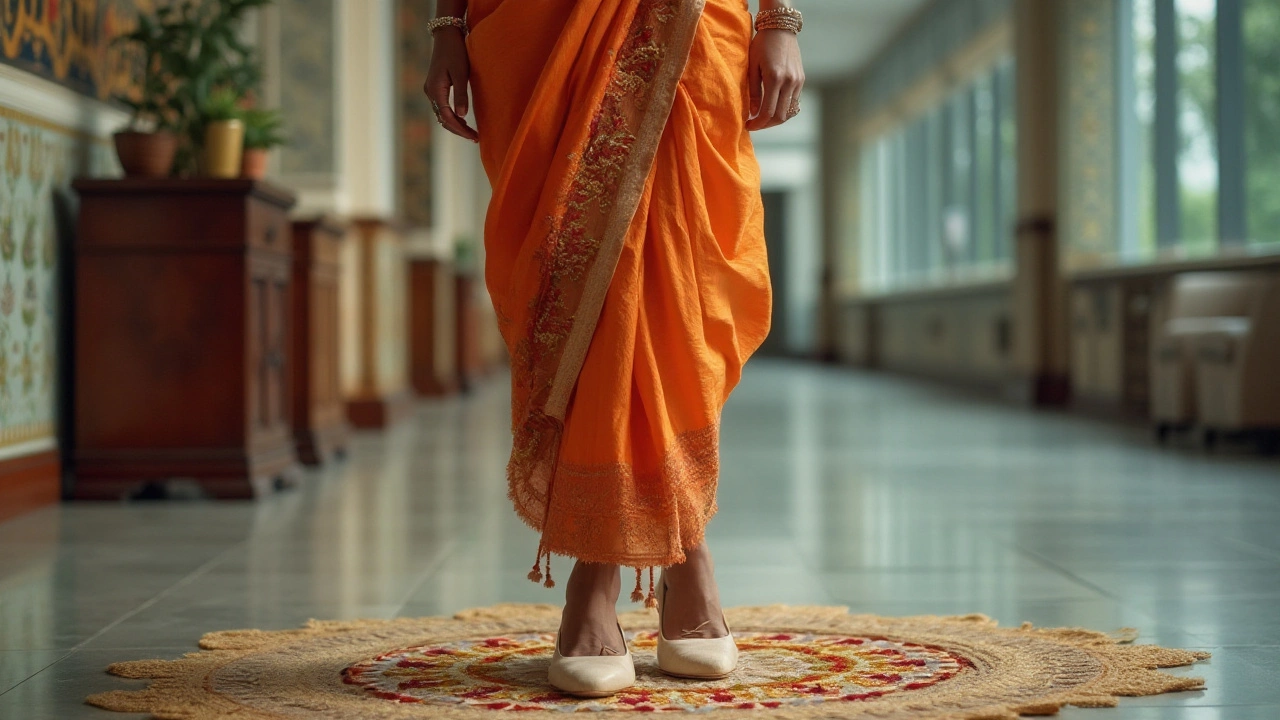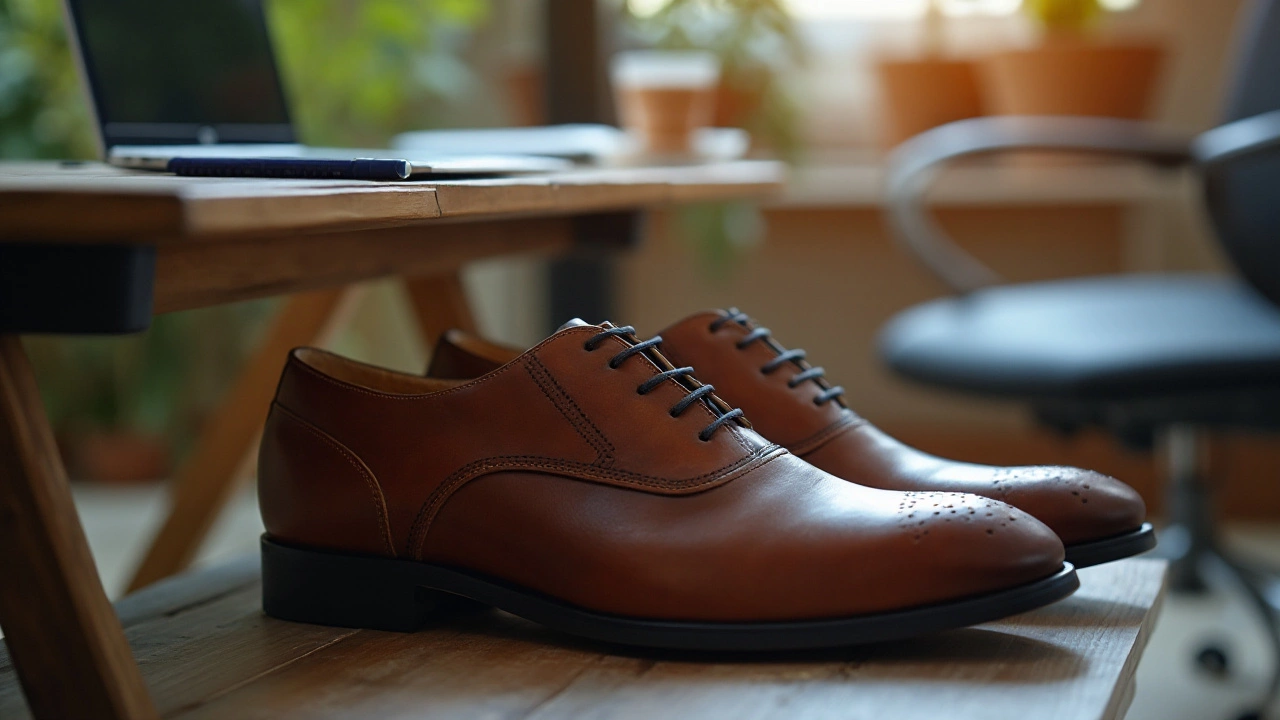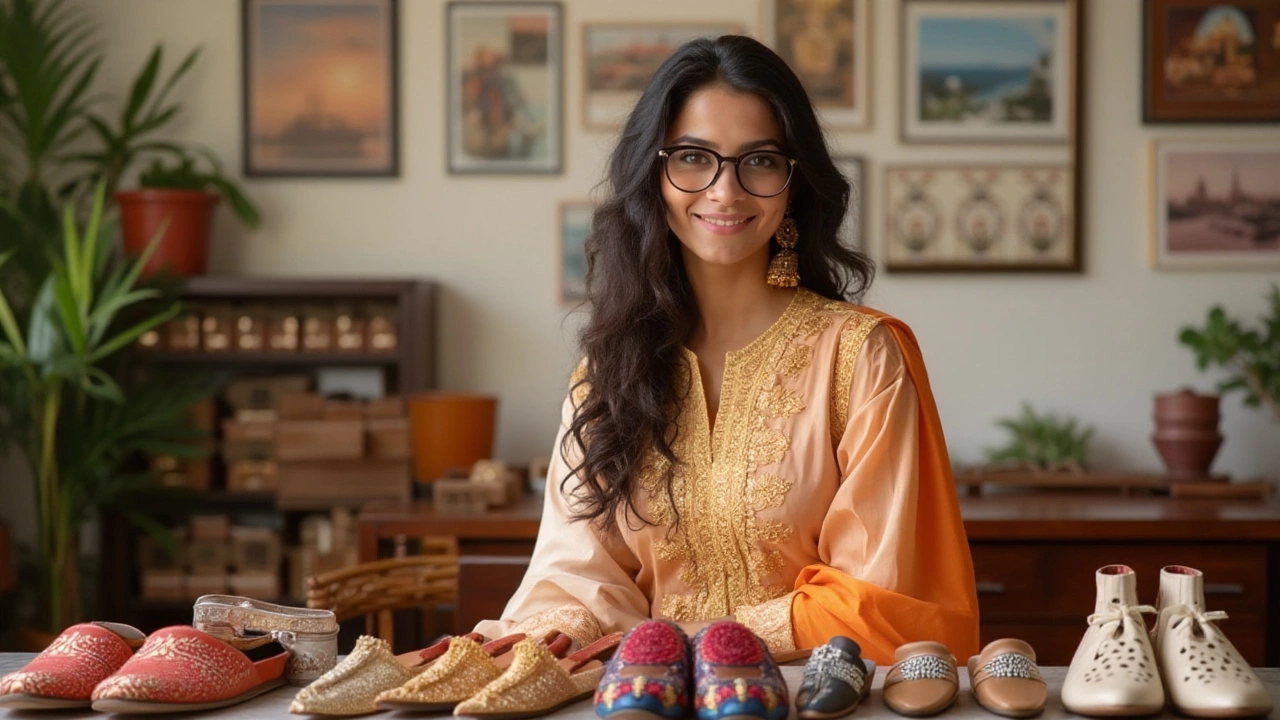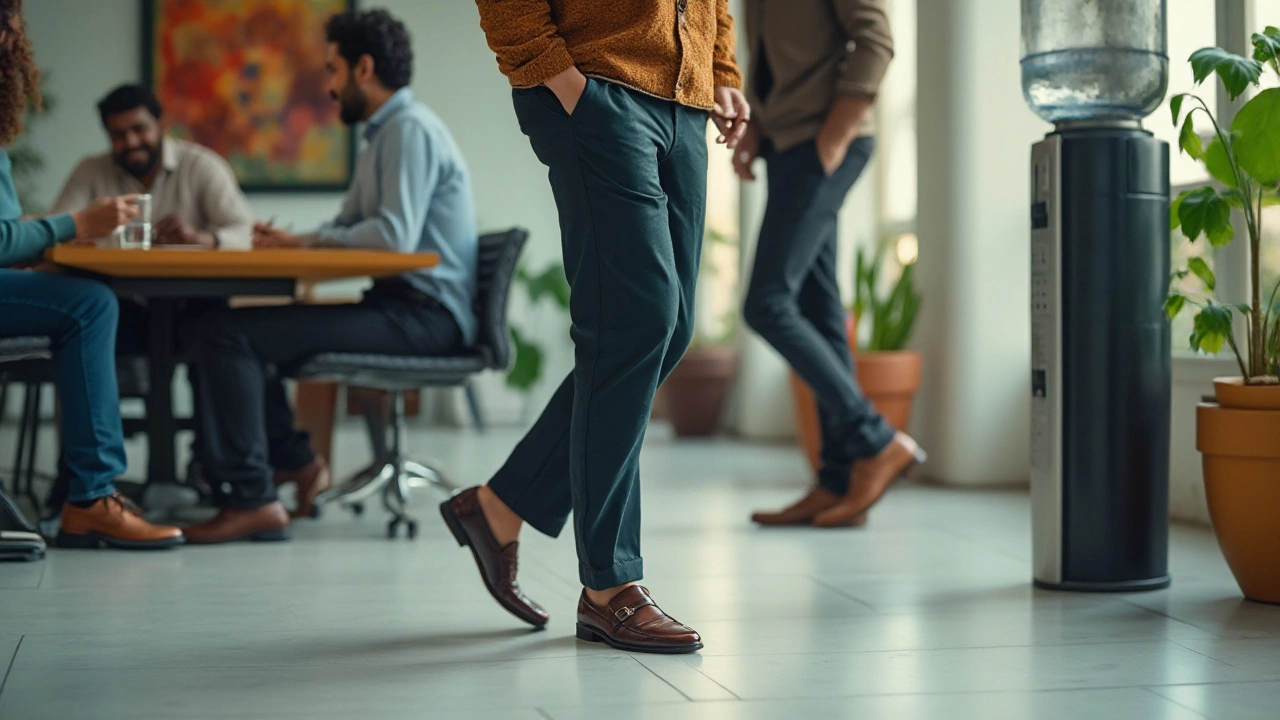Picking the right shoes for the office can often be as complex as choosing the right career path. While fashion evolves and individual styles vary, knowing which shoes will meet workplace expectations can make or break a professional appearance. Shoes are not just a matter of personal style; they show respect for the dress code and can significantly impact your comfort throughout the day.
Whether you're walking down long hallways or sitting through back-to-back meetings, the type of shoe you choose can influence your workday productivity and your mood. In this article, we'll delve into what makes a shoe workplace-friendly, the must-have styles for different industries, and how to maintain your preferred pair.
Navigating the vast world of office footwear doesn't have to be overwhelming. Stay with us as we explore your footwear options that marry comfort, professionalism, and a splash of personal flair.
- Understanding Office Dress Codes
- Top Shoe Styles for Different Professions
- Balancing Comfort with Professionalism
- Maintenance Tips for Work Shoes
Understanding Office Dress Codes
Venturing into the realm of work shoes for the office brings us first to the sometimes-murky waters of dress codes. These unwritten laws shape the fabric of corporate culture, subtly dictating not just what we wear, but also how we present ourselves. The guidelines can vary widely depending on the industry and company, from the classic formalities of law firms to the laid-back vibe found in tech startups. It's important to recognize that dress codes exist to ensure a standard of professionalism and to align with a company’s image. Despite being labeled as 'guidelines,' they carry the weight of more than mere suggestions, informing how co-workers and clients perceive one another. In recent years, the concept of business casual has soared in popularity, offering a middle ground between starch-collared formality and utter free-for-all. Business casual generally means that while you're freed from the clutches of a three-piece suit, elements of professionalism remain indispensable. Finding this balance often involves picking the right shoes that straddle comfort and style.
In many traditional sectors like finance or law, the definition of acceptable office footwear remains quite conservative. Here, closed-toe shoes, such as oxfords for men and low to mid-heel pumps for women, are the norm. These shoes maintain a sleek appearance and are usually crafted from leather or other refined materials that wipe clean easily, ensuring they always look polished. Instilling such habits as professional polish not only reflects personal grooming but also respect for the workplace’s values. Having said that, there's a growing trend for more relaxed footwear environments in other sectors. For instance, in creative industries, it is commonplace for workplaces to embrace individuality, allowing canvas sneakers, leather boots, or even stylish flats. They key is still to maintain a professional look, even if it bends towards the artistic or unconventional.
"Dress codes are evolving, becoming more inclusive and reflective of diverse business landscapes," says Jane Andrews, a renowned fashion consultant. "Understanding your workplace's unwritten rules and blending in personal style is key to striking the right professional chord."
Professional shoes should not only fit the look but also the environment’s function. Depending on the job's demands, shoes worn at work may need to meet specific safety or orthopedic requirements, particularly in sectors like healthcare or manufacturing. Understanding these needs is vital to choosing shoes that allow you to perform your job effectively without compromising on style or safety. In open-plan offices with shared spaces, where meetings with clients or executives could occur at any moment, versatile footwear that can transition from desk to conference room can be invaluable.Business casual shoes are often favored in workplaces that encourage mastery of both disciplines; where a pair can look just as fitting at an office as it does during the walk home or at a casual workplace event. At the end of the day, the wise choice of work shoes can be an emblem of efficiency in today's dynamic work environments. Knowing how to decode your office's dress code allows you to harness one of the most valuable soft skills: presenting oneself credibly and authentically in any scenario.

Top Shoe Styles for Different Professions
When it comes to choosing the perfect work shoes, it's not a one-size-fits-all situation. Different professions often come with distinct expectations regarding attire, and this includes footwear. Your choice isn't just about aligning with a dress code; it's also about finding that sweet spot where comfort meets style in a way that supports your daily tasks. Let's explore some professions and the shoe styles that best complement them, ensuring you're not only appropriately dressed but also feeling good on your feet.
Corporate Environments
In corporate settings, where business formal is often the name of the game, the classics lead the way. Here, sleek leather loafers or oxford shoes are typically the go-to options. Their clean lines and polished appearance fit seamlessly into board meetings and client presentations. Adding a modern twist, some professionals are now turning to brogues, which offer a touch of personality with their decorative perforations without straying from the formal envelope. A survey by the Society for Human Resource Management found that 50% of companies still prefer formal shoes over any other type, emphasizing the importance of proper footwear in such environments.
Creative Industries
Creative fields, including advertising, design, and tech startups, often break the mold in terms of dress code. Here, creativity extends to footwear choices. While sneakers might seem too casual for some, they are increasingly becoming a staple for those who value comfort and a bit of flair in the creative sector. Brands like Converse and Nike now offer designs that blend casual chic with professional undertones. This industry values individuality, and as long as the shoes are clean and well-cared for, they can add to your unique professional persona. As Steve Jobs, a pioneer of tech culture, famously quipped, "It's not about how many hours you put into your work, it's about what you put into those hours," and that includes wearing shoes that inspire a sense of productivity and ease.
Medical and Hospitality
For those clocking long hours on their feet in hospitals or hotels, comfort is more than a luxury—it's a necessity. In these professions, practicality often trumps aesthetics. Here, non-slip work shoes reign supreme. Brands like Dansko and Crocs have carved out a niche, providing a blend of support, durability, and style. Consider that a hospital study reported a 30% reduction in foot and back pain when staff wore professionally recommended clogs. Lightweight sneakers with proper cushioning and arch support also make frequent appearances in these sectors, ensuring that the wearer's focus can stay on the task at hand rather than on aching feet.
Education and Public Service
Educators and public servants often seek a balance between formal and approachable footwear. For them, shoes must be presentable yet practical for busy, active days. Here, flats or wedge heels are popular among women, offering a touch of elegance without compromising on comfort. Men, on the other hand, may opt for sturdy, polished derbies or loafers, adaptable to both classroom settings and professional meetings. Often overlooked, arch support and cushioned insoles are crucial in this field to offset the demands of long hours spent standing or walking, ensuring educators and service professionals can focus on their work without distractions.

Balancing Comfort with Professionalism
In the world of office attire, striking the perfect balance between comfort and professionalism is not just desirable, it's essential. The right pair of work shoes can be a game-changer, bringing you the best of both worlds—comfort to get through long hours and the finesse to maintain a professional appearance. When choosing office footwear, understanding your work environment and your role within it is crucial. For instance, a creative professional might enjoy a bit more leeway in style compared to someone in a corporate setting where expectations are stricter.
Many people often believe that style must be sacrificed for comfort, but this is increasingly untrue in 2025. The evolution of office footwear has led to a wealth of options that cater to both needs. Consider brands known for their ergonomic designs and attention to style. These days, shoes are incorporating modern technology to cushion impact, improve posture, and allow breathability—all without compromising on looks. Even classic brands have started to include memory foam insoles and arch support in their classic business shoes, letting you roam the office comfortably while still looking sharp.
Understanding Shoe Material and Design
The type of material used in shoe construction plays a significant role in its comfort. Leather, for example, is a popular choice for its durability and ability to mold to your foot over time. However, newer materials like high-tech mesh and synthetic fabrics offer breathable and lightweight alternatives that are worth considering. Pay attention to design elements such as heel height and toe space. A slight heel can elevate one's style, literally and figuratively, without causing the dreaded end-of-day soreness. To accommodate all shapes and sizes, shoe manufacturers have become adept at adding width options and customizable fits to their lines."Considering both comfort and appearance in footwear shouldn't be a trade-off," says renowned style expert, Mary Belle Gentry. "You can absolutely have both. Well-selected, well-maintained shoes reflect self-respect and could potentially project success and confidence to those around you."
Decoding the Industry Standards
It’s important to recognize that different industries have unique conventions regarding professional shoes. A doctor moving between long hospital corridors will have different needs from an executive who spends most of the day behind a desk. In environments where professionalism reigns supreme, like banking or law, you’ll often find black or brown leather shoes with simple designs. Sleek loafers or conservative pumps work well, ensuring you remain stylish while navigating meetings and client interactions.Budget-conscious shoppers should rest assured that high-quality business casual shoes don't always come with a high price tag. With a little research, you can find economical brands that offer comparable comfort and longevity to their pricier counterparts. Remember to always opt for value over cost, considering how often you'll wear these shoes during a week—investing in your feet is investing in your overall health.
The art of balancing comfort with professionalism in work shoes is more than an exercise in aesthetics. It’s a necessary pursuit for those who wish to project confidence and competence in their professional environments. The options available today mean that everyone can find that perfect pair of shoes to glide through their workdays with ease and elegance.

Maintenance Tips for Work Shoes
Taking proper care of your work shoes not only extends their lifespan but also keeps them looking sharp and professional throughout the working week. A regular cleaning routine is crucial. Start by giving your shoes a gentle wipe with a damp cloth after each use to remove dust and dirt. Avoid soaking them in water as excessive moisture can damage the leather and fabric over time. It’s wise to use a good quality shoe cleaner—invest in one that is specifically designed for the shoe material you are maintaining, whether it's leather, suede, or synthetic.
Beyond cleaning, conditioning is equally important for shoes made of leather. Leather can dry out, causing cracks, which not only mar the appearance of the shoe but also compromise its integrity. A good leather conditioner applied once a month keeps them supple. Make sure to test the conditioner on a hidden area first to prevent discoloration. If you frequently wear the same pair, consider rotating with another pair to allow them to breathe and recover. This simple practice can dramatically increase the longevity of your office footwear.
According to the American Orthopaedic Foot and Ankle Society, "Proper shoe maintenance is essential not just for extending the life of your shoes, but also for the health of your feet."
Protection of your shoes is not only about cleaning but also preventing potential stains. Before wearing new shoes, especially those constructed from fabric or leather, apply a waterproofing spray to shield them from rain or accidental spills. Make sure to read the instructions carefully on the spray for optimal results. Additionally, invest in shoe trees. These handy tools help maintain the natural shape of your shoes and prevent them from collapsing over time, especially in shoes made from natural materials. Professional shoes benefit greatly from shoe trees when not in use overnight.
| Material | Cleaning Method | Conditioning |
|---|---|---|
| Leather | Wipe clean, use leather cleaner | Monthly conditioning |
| Suede | Brush with suede brush, use suede cleaner | N/A |
| Fabric | Spot clean with mild detergent | N/A |
Finally, don't forget about the soles of your shoes, which bear the brunt of the wear and tear during those busy office days. Inspect them routinely. If you notice significant wear or unevenness that might affect your gait, consult a cobbler for resoling or repairs. Regularly cleaning the soles with a brush removes debris, preventing it from grinding down to nothing. A little attention goes a long way in maintaining a solid foundation, both for your shoes and your office style. By investing time in taking care of your business casual shoes, you're investing in your health and your professional image.

